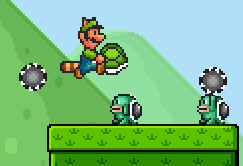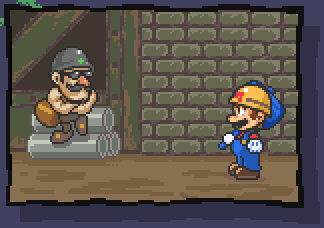I Came in Like a Wrecking Crew (original) (raw)
It’s weird how many obscure Mario-related games there are. I’d wanted to discuss a few Japan-only ones that I’ve seen footage of recently, but there were some connections there to games we did get here in the States that I’d never really written about. One of the Japanese games is Wrecking Crew ’98, which came out in…okay, you can probably guess when, for the Super Famicom. But that wouldn’t make too much sense without first talking about the original Wrecking Crew from 1985, the same year as the original Super Mario Bros.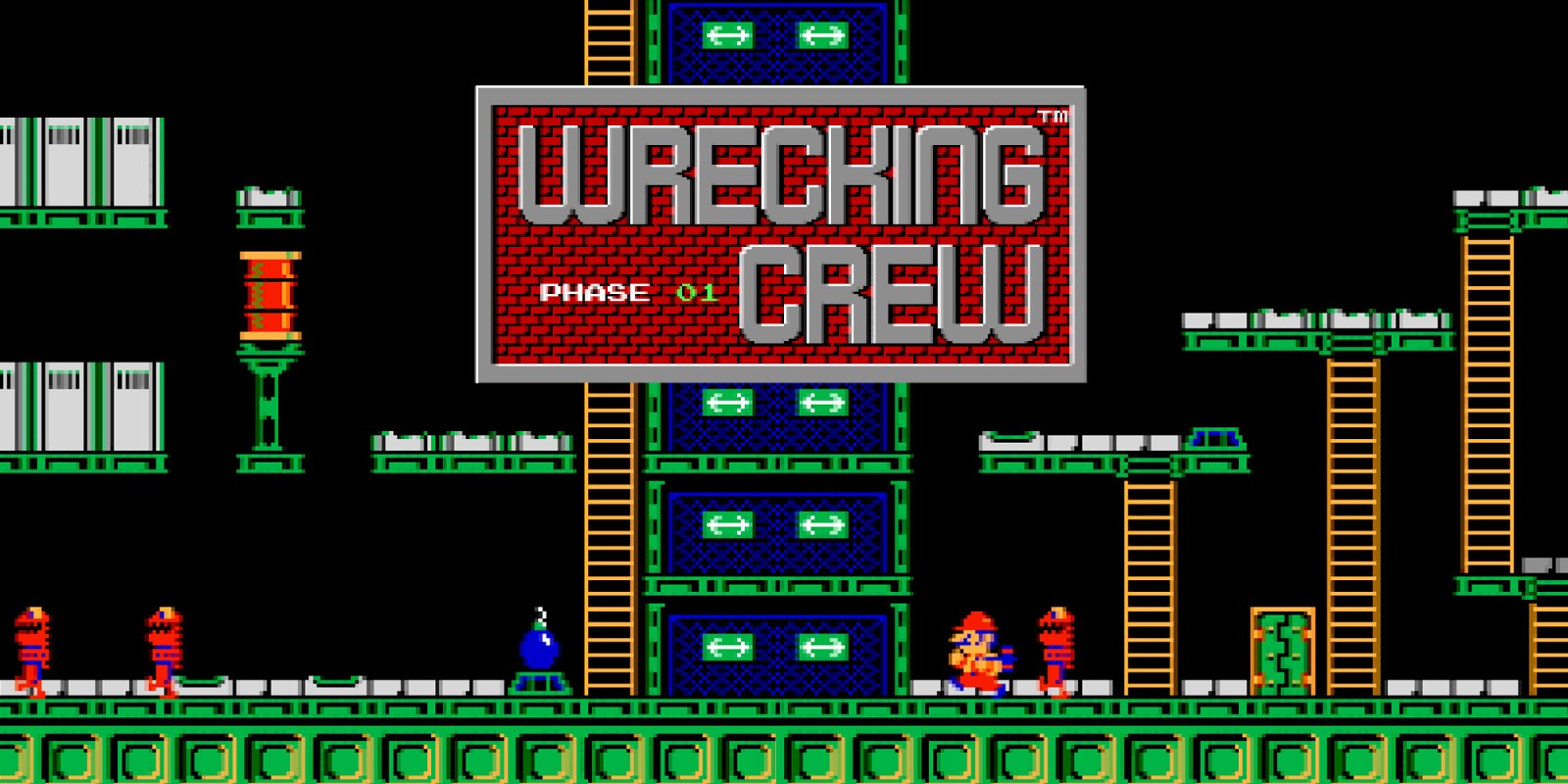
I wasn’t familiar with this one as a kid, but Beth had it, and I’ve seen her play it. While it was made for home consoles and not arcades, it has arcade-style gameplay, where you have to make your way through stages destroying all the fixtures. It was originally not designed as a Mario game, but Shigeru Miyamoto noted the protagonist’s similarity to his famous character, so they just went ahead and made Mario the hero, with Luigi as the second player. Since Mario started out as a carpenter on a construction site, I suppose his doing demolition isn’t much of a stretch. Their antagonist was a guy called Blackie, or possibly Breaky, who showed up in the bonus stages to impede the brothers’ progress and take coins. In English, he’s called Foreman Spike, so I guess he’s Mario and Luigi’s boss, but he’s still in competition with them.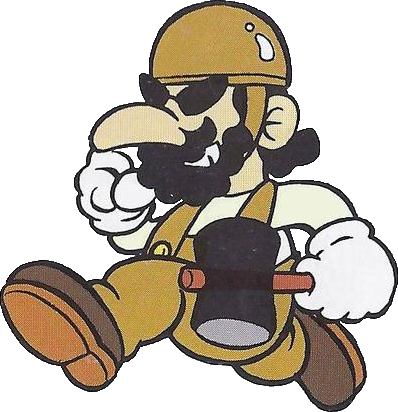
I assume he’s not related to the Spikes who throw spiked balls or the character in the live-action movie, but who knows?
“Hey, which one of us is the foreman?”
His similarity to the later Wario has been noted quite often, as they’re both rivals to Mario who look a lot like him. I assume the same graphical limitations that led to Mario having a hat and a mustache to distinguish his features were why Spike has a beard and sunglasses, probably to make him distinct from the hero.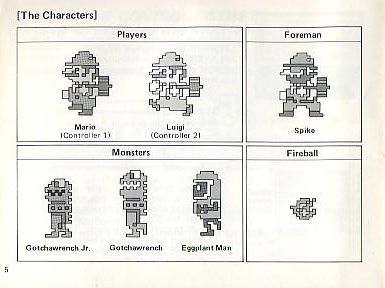
Booster in Super Mario RPG looks quite a bit like Wario with a beard, so there are a lot of connections to be made here.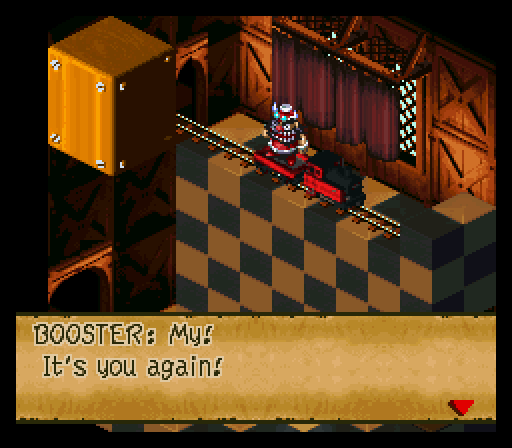
Other opponents on the building sites where Mario is working are the Gotchawrenches, living wrenches that are also dragons; and Eggplant Men in masks.
As far as video games in which eggplants appear, this was shortly after Ice Climber, but before the Eggplant Wizards in Kid Icarus. Drew Mackie mentioned a few other eggplant characters in Nintendo games, and the Mario Wiki adds Kid Eggplant in Chibi-Robo!, who looks pretty much exactly like the Eggplant Men.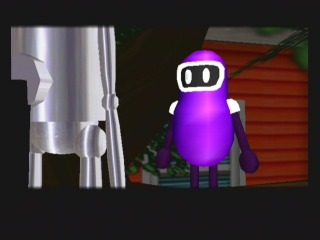
Incidentally, Adventure Island is a reskin of Wonder Boy for the arcade and Sega Master System, but it looks like the original has a little Grim Reaper instead of an eggplant.
Wrecking Crew ’98 is a sequel to the original game that has more of a story and ties in with the larger Mario franchise. The story is that Mario has returned from the Mushroom Kingdom after a vacation to find that Bowser had commissioned high-rise buildings all over the place, which were blocking out the light. He goes home to get his hammer from the original Wrecking Crew, and goes to take down the buildings. The game has more of a Tetris style of play than its predecessor, with the blocks you have to destroy all stacked up instead of spread out across the site. It’s also competitive, with Mario trying to beat an opponent in clearing the area. Foreman Spike is there as well, teaming up with Mario’s arch-rival to seek revenge on the red-clad protagonist. For some reason, Spike is now a gay leatherman with a mustache and no beard.
When he reappears as a playable character in Mobile Golf for the Game Boy Color, however, he has the beard again and has gained a lot of weight. He’s also apparently now using his construction equipment to gather golf balls.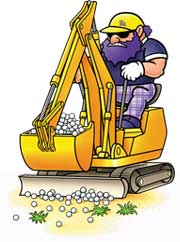
What’s weird when contrasting Wrecking Crew ’98’s story with the gameplay is that the opponents, including Bowser and Spike, are also trying to destroy the buildings, even though they’re the ones who put them there in the first place. Both the Gotchawrench and Eggplant Man reappear as opponents, and the former seems to be a robot, if the translation is accurate. There’s also a Koopa Troopa who wears his hard hat over his already hard shell instead of his head.
Bowser wears his helmet appropriately, but still looks kind of funny with it on.
In bonus buildings, Mario faces off against a living rice ball, a ghost girl, a drunk guy, and an animated clay figure, because those make so much more sense than other Mario villains.
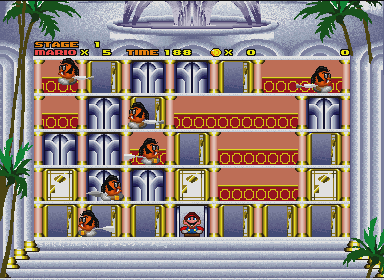
What I find kind of interesting is how the plot kind of resembles that of Hotel Mario, a 1994 Philips CD-i game much more famous for its cheesy, poorly animated cut scenes than anything else. While licensed by Nintendo, they really didn’t have anything to do with its development, so it’s generally not regarded as an official Mario game any more than the CD-i Zelda games are considered part of that series. It is, however, referenced in Yves Bourgelas’ fan comic “The 3 Little Princesses,” along with bootleg games and other inside jokes.
But anyway, they both have Bowser constructing unwelcome buildings in the Mushroom Kingdom. I wonder if Foreman Spike helped with the Koopa hotels.
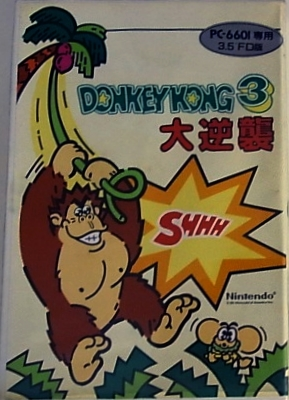
Another game I wanted to mention was Donkey Kong 3: Dai Gyakushu, the Japanese part of which translates as “Great Counterstrike.” It’s a semi-sequel to the original Donkey Kong 3, which never caught on like the first two did, and stars Stanley the Bugman instead of Mario. Developed by Hudson Soft for Japanese computers, Dai Gyakushu also features Stanley, and has similar gameplay to DK3, only it’s stripped down. You still use bug spray to fight bugs and force Donkey Kong towards the top of the screen, but the plants are no longer there, and the insects move more like the aliens in Galaga. Presumably to make up for the lack of relevant graphics, there are still images in the stage backgrounds, creating a tale of Stanley and DK being abducted by a UFO and visiting other planets that has absolutely no bearing on how the game plays out.
Maybe Stanley has never made another appearance because he’s still in space, although DK must have found his way back.
